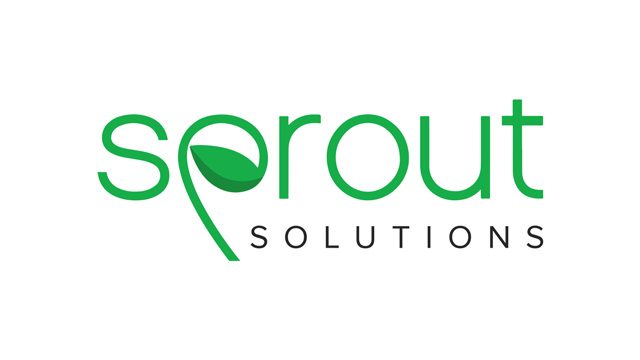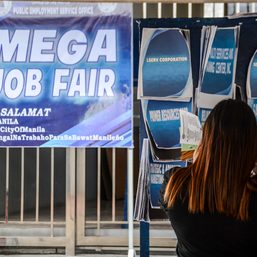SUMMARY
This is AI generated summarization, which may have errors. For context, always refer to the full article.

Editor’s note: This content is sponsored by Sprout Solutions and was produced by BrandRap, the sales and marketing arm of Rappler. No member of the news and editorial team participated in the production of this piece.
When I was just starting out as an employee, the most challenging part was dragging myself out of bed every morning to go to work. It’s not that I didn’t want to work. I did enjoy the creative jobs I was in.
What I dreaded were the early alarms, the hurried preparations, the toiling commute going to the office and back home again in a few hours. It felt like time taken away from more sleep, a healthy morning routine, and to be honest, life outside of work.
It’s just that every day is different. Some days you work beyond office hours or life happens and you couldn’t sleep at a godly hour. It’s a tall order to expect people to be at the office at a certain time every single day – and expect them to simply be at their best.
Traditional employers might say it was just me being an entitled millennial employee. But when I moved to my current company – which followed a hybrid setup even before the pandemic happened – I’ve seen how that benefited me and my company in terms of my work performance.
A hybrid setup fit for a work-life integration
We’re output-based so that means we don’t have a specific time to clock in. We didn’t even have bundy clocks or one of those biometric machines in the office. Just a simple chat, “in,” sent to our office communication channels was enough. That one small element removed any pressure I had going to work, and yet I still came early because I wanted to finish all of my day’s work within office hours.
We were also allowed to work remotely twice a week. Having those two days every week that I could spend at home or wherever allowed me to recover energy lost during the days I had to work in the office. It meant I could sleep more in the morning, exercise, eat meals with my family, and enjoy some of my hobbies after I was done with my tasks.
Unlike what some traditional employers fear about remote work, I didn’t abuse those two days out of the office. I knew it was a privilege so I did my best to make sure we got to keep it. I would submit all of my deliverables on time and would always be reachable – as if I were in the office, too.
Having been with the company for almost 5 years now is, for me, proof that this setup works. It’s the longest I’ve held on to any job since I started working. I had only lasted about one to three years in my previous companies and my reason for leaving had always been severe burnout.
To this day, I have never dreaded Mondays or coming back to work even after a long holiday. Maybe it’s because it doesn’t feel like a prison cell that I always need to escape from but an open park where I could freely come and go once I’m done with what I came there for. My bosses aren’t guards trying to watch my every move, they’re guardians who are guiding our path to success.
Skipping the pandemic work learning curve
This hybrid setup prepared us for the worst crisis to hit every company in the past two years – the pandemic. The lockdowns forced companies to work from home and not everyone was ready for that. But we were. We have been working remotely for as far as we can remember, developing the agility to continue business operations even with the lack of an office.
Libby Pascual, our head of human resources at Rappler, shares more insights about our company’s hybrid work setup.
“Rappler didn’t have any difficulty with the hybrid system since we have been output based ever since. We don’t monitor time in and time out but instead observe timelines and mandate open communication lines and immediate feedback,” said Pascual. “It is actually part of Rappler’s culture with its three pillars of content, technology, and community.”
To me, it just felt like an extension of our two-day remote work privilege. We just continued churning out content for our brand partners, making online executions happen because we had the know-how for it. There wasn’t a steep learning curve, just a seamless transition. It was the epitome of “business as usual.”
What looked like a useless privilege to some traditional employers paid off at a time when the company needed agile employees the most.
The future of work is here and now
Sprout Solutions, a cloud-based human resources (HR) company, conducted a survey among 485 HR admins and managers and 8,194 employees to find out what they think about the hybrid work model.
The report defines a hybrid work model as having “a flexible way of working that supports a distributed workforce of employees with the freedom to work partly remotely or partly in-office (or a specific location).” It also has different types: remote hybrid, in-person hybrid, mixed hybrid, and split hybrid.

Not surprisingly, 70.71% of remote employees love their current remote setup just like I do. But only 43.54% of them say they feel engaged. I can relate to this. While I love the freedom from commuting and the extra time to do other things outside of work, I do miss hanging out with my officemates and attending office parties and events. A virtual Christmas party lacks the magic of an in-person one where we get to enjoy the year that was over food and drinks.
“We may have been used to working from home but doing it straight for almost two years can be draining when they can not have distraction from the monotony of home surroundings. There is no delineation of work hours and break time also so we continuously remind our people about it,” said Pascual. “Even the worktools like the laptop were breaking down. We needed to provide backup units. And there is still that value of face to face interaction making work more meaningful. With the full vaccination of employees, we have allowed face to face meetings with caution, limiting the number of people and following strict health and safety protocols.”
64.6% of HR admins and managers also expressed the need for support in adopting a hybrid work setup. With some companies coming from traditional work setups, the biggest challenge was to identify the employees who could work remotely and those who couldn’t.
“HR could not do it alone of course so we also relied on our managers who did regular check-ins with their direct reports to monitor how they are adjusting with full remote work, check not only on their physical but mental health as well. We provided mental health assistance to those who needed it,” said Pascual. “The regular check-ins were very critical. We also scheduled regular general assemblies so our people are updated on what’s happening in the organization and so management can assure them also that things are in order.”
But with the future of work being hybrid, 64.2% of HR admins and managers say they’re willing to change and redefine the workplace to adopt this way of working. Even 47% of on-site HR managers and 65.6% of on-site employees are open to a hybrid setup.
“We may still adopt the hybrid setup for those who want it as this has not affected the productivity of our people,” said Pascual.
The hybrid work setup has always been what employees are looking for. They want freedom and flexibility to achieve a work-life integration but they don’t want to miss out on opportunities to connect and collaborate with workmates.
Equipping the workplace with tools for a hybrid future
As an early adopter of the remote work setup, we have equipped ourselves with the necessary tools needed for a hybrid workplace. This includes working in laptops instead of desktop computers, familiarizing ourselves with digital communication tools like Google Meet and other platforms to connect and collaborate with one another, and having cloud-based platforms like Sprout Solutions for our HR needs.
Even before the pandemic, we have been able to file our leaves, check our pay slips, and more, with ease using our cloud-based HR hub. For a company that embraces independence and shuns bureaucracy, it’s nice to see that it applies even to menial but important tasks like this that are usually prone to red tape.
“The synchronization of the Sprout HR and Payroll has been in place even prior to the pandemic. And this has been very helpful for validation of our payroll processes and the enrollment of new hires and cancellation of resigned employees,” said Pascual.
But as with everything, there’s still room for improvement. Sprout Solutions’ report also shows that companies are still figuring out how to effectively provide employee support, incentives, and tools needed for a hybrid setup. The good news is, there’s already the intent to make the changes needed.
It may have taken a pandemic for companies to take the first few steps, but we’re at least headed in the right direction and a brighter future for the workforce. By doing so, we’re preparing our companies and employees for whatever lies ahead. – Rappler.com
Get a copy of the report through this link.
Add a comment
How does this make you feel?

![[PODCAST] Teach Me, Senpai, E12: Travel writing and freelancing with Kara Santos](https://www.rappler.com/tachyon/2024/04/teach-me-senpai-ls-guest.jpg?resize=257%2C257&crop=455px%2C0px%2C1080px%2C1080px)

![[PODCAST] Teach Me, Senpai, E8: Illustrating and freelancing with Raxenne Maniquiz](https://www.rappler.com/tachyon/2023/12/teach-me-senpai-ls-guest.jpg?resize=257%2C257&crop=459px%2C0px%2C1080px%2C1080px)
![[PODCAST] Teach Me, Senpai, E7: Tattoos and illustrations with Wiji Lacsamana](https://www.rappler.com/tachyon/2023/11/tms-lacsamana-ls-optimized.jpg?resize=257%2C257&crop_strategy=attention)
![[PODCAST] Teach Me, Senpai, E6: Thrifting and vintage clothing with Season Pass](https://www.rappler.com/tachyon/2023/11/teach-me-senpai-ls-guest.jpg?resize=257%2C257&crop=460px%2C0px%2C1080px%2C1080px)
There are no comments yet. Add your comment to start the conversation.